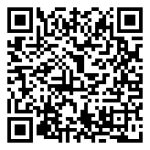It’s a concept heard again and again: the Internet is making the world more connected, and it’s not just about technologically advanced countries, either. Wired Magazine has an infographic that shows how many people throughout the world are “digital natives”–young people who were born in a digital environment, and have been using technology their entire lives.
The country with the most digitally connected young people is Iceland. Lithuania has more than the U.S, and Slovakia and Latvia come in ahead of the U.K. The economy is changing all over the world, and connected people will drive it. Now it’s easier than ever to buy from anywhere and look for the best value.
For small businesses, it can be challenging to reach out to potential customers who are savvy as well as able to easily buy from the competition. Even if a company isn’t trying to sell to the world, it still has to make sure it’s connecting with the connected. Here are a few reminders for doing that:
1 – Have a marketing plan in place. Offer compelling content that people will want to read (blog or white papers), watch (video), or look at (photos). If they like it and find it useful, they’ll share it. I make sure I use a range of media to communicate with potential and current customers, including my online radio show. But a marketing plan has to be consistent, and goals have to be set. An online strategy should be organized and measured. If something doesn’t work, pursue a different track.
2 – Make your website mobile. Throughout the world, many people are using their smartphones to communicate, get information, and of course buy. Websites that don’t adjust for easy phone use will discourage people from spending time there. And if possible, develop an app that will make purchasing easier and perhaps provides a bit of entertainment for customers.
3 – Bring technology offline. If you have a store or another brick-and-mortar business, make it multimedia so that the digital natives who enter can use their phones to get special deals and engage in a variety of ways. Some business owners think it’s enough to have a QR code (a square that functions like a bar code–as the image in this blog post shows), but a lot of people don’t have QR code scanners on their phones; it’s just as easy to type in a web address or tap on an app.
Whatever technological marketing and sales methods are used to attract customers and retain them, it’s important to assume there are a variety of segments. Buying habits won’t be the same for everyone in that younger generation. That’s where effective research and a solid follow-up plan can lead to success.


Appreciation to my father who told me about this webpage, this blog
is really remarkable.
There is certainly a lot to know about this topic.
I like all the points you’ve made.
Great beat ! I would like to apprentice while you amend your website, how can i subscribe for a blog site?
The account aided me a acceptable deal. I had been tiny bit acquainted of this your
broadcast provided bright clear concept
It’s remarkable for me to have a web site, which is good in favor of my know-how.
thanks admin